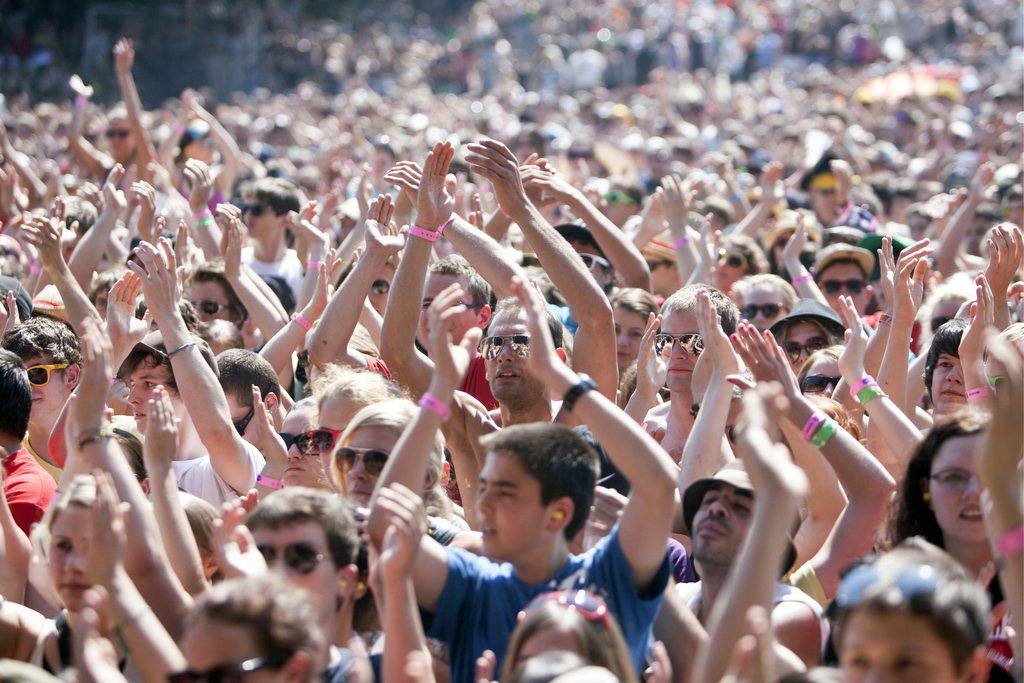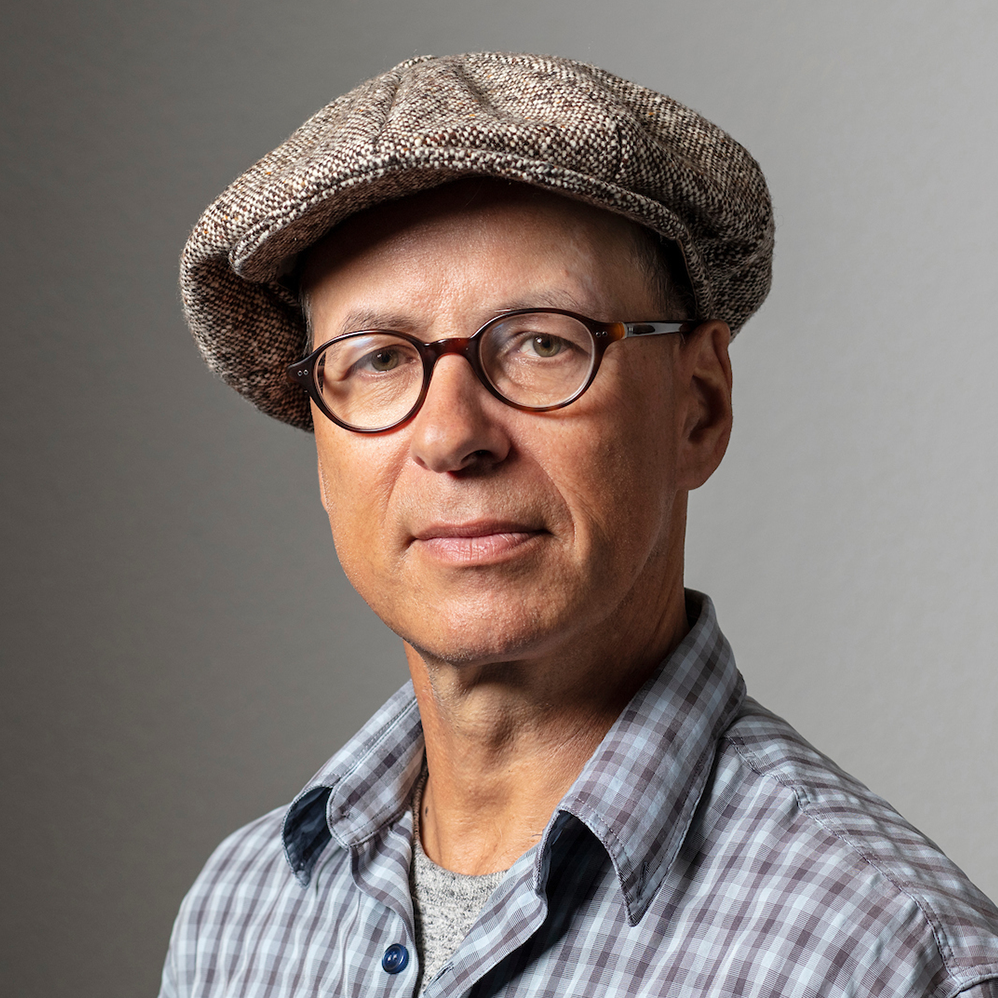
“Festivals are rituals with musical accompaniment”

Staging more than 300 openair festivals each year, Switzerland can lay claim to bonafide music credentials. But while the music has to be good, festival guru Jodok Kobelt says partying as a group is the key to a succesful event.
“There are many people who no longer go away on holidays in the summer but instead go to these openair events. Festivals have become a kind of extended living room, in which people can realise their dreams of a friendly world enjoying one big party,” Kobelt tells swissinfo.ch.
As music broadcaster with the outdoor van of Swiss Radio DRS 3, Kobelt was a constant feature of the Swiss festival scene from 1983 to 1999.
And the business is booming. Besides the openair “classics” (see sidebar), new festivals have sprouted like weeds in recent years. Even for an insider like Christof Huber, organiser of both OpenAir St Gallen and Summerdays in Arbon, it’s hard to keep track of them all.
“Switzerland easily has 300 festivals,” Huber, who is also general secretary of Yourope, the association of European festival organisers, tells swissinfo.ch. He says that when it comes to major festivals with a European reputation, no other country has as many as Switzerland.
Musical ritual
“Having a good time with friends, meeting new people, eating and drinking together. If the weather’s bad, wet feet and muddied jeans, and of course a full serving of music,” is how Kobelt describes that special festival feeling.
General enjoyment of music as opposed to new musical experiences is the focus of festival-goers. Kobelt sees the major festivals as being something independent of the music itself. He speaks of “rituals with musical accompaniment. Who happens to be on the bill is not really all that important”.
It is enough for visitors to know that the music will be good – and that is the organiser’s job. As an indication of this, Kobelt notes that the big festivals are sold out soon after ticket sales open.
“It is part of the ritual to give what are known as early-bird passes as Christmas presents, when no-one even knows what acts will be appearing,” Kobelt says.
Strokes for folks
Kobelt is still able to identify a certain amount of specialisation in the big festivals.
“In St Gallen and on the Gurten, rock predominates and there are new faces from the indie scene. Paléo Nyon combines very successful stars, world music and Francophone surprises. In Frauenfeld it’s hip-hop, and in Montreux it’s familiar jazz, R&B and world music plus some new discoveries, while Greenfield is mostly concerned with heavy full-blast rock,” he says.
Organisers have mostly given up on earlier ambitions to bring their audience exclusive attractions, notes Kobelt, who authors the world music blog globalsounds.info. American star Lenny Kravitz is on the bill for several festivals in Switzerland this summer: Paléo in Montreux, Gurten in Bern and at the Moon and Stars in Locarno.
For Kobelt this rash of appearances is not just a coincidence. “For one thing, Kravitz is a real ‘stage animal’ and he is one of those musicians who have always played a lot of concerts and are always on tour.”
On the other hand, the singer-guitarist fits into all the festival classifications because of his versatility: “Sometimes he plays at the quieter ones, sometimes at the loud ones”.
Too much of a good thing?
But Huber says the festival market that has completely changed in the last twenty years. “You have to wonder if it makes sense to have a festival every week within a 20- or 30-kilometre radius,” he says.
This kind of saturation makes it harder for organisers to give their festival a unique profile. In its 36th year, OpenAir St Gallen is one of the more traditional festivals in this country.
“But we reinvent it every year,” says Huber. The mix involves electro acts on the main stage, many new bands, but also art (a poster) by young designers.
“That way we try to appeal to a young audience and also a new audience,” says Huber.
Huge turnover, little profit
Suggestions that Swiss festivals have the highest ticket prices and fees for acts are dismissed by Huber. In Britain, the Netherlands, Scandinavia and Germany, stars make even more because the markets there are bigger, he says.
“In England for example there are a lot of festivals where tickets are £200 to £250 (SFr302-378),” says Huber. In Switzerland, tickets are usally priced at under SFr200.
And the budgets of the major festivals are in the millions.
“But you don’t make big money that way,” notes Kobelt. “There is a profit for the organisers and stand operators. But in comparison with turnover – even in the case of the major festivals – there is really not much left at the end.”
“We have been very happy with the last couple of years,” said Huber. “But just three years ago we took a big loss, because we sold 6,000 too few tickets.” To cope with such setbacks, according to Huber, festival organisers need staying power and above all financial stability.
Both Huber and Kobelt say that big festivals rely on sponsors to help keep fixed costs down. In St Gallen, about 20 per cent of the budget is covered by sponsors. According to Huber, sponsors’ presence on the festival site makes sense if they are offering the public a service, such as bank machines or charging stations for mobile phones.
With about 300 events, Switzerland is top of the charts for open-air concerts. The festival season lasts from mid-June to mid-August.
The heavyweight of the industry is the Paléo festival. With about 230,000 visitors who flock to Nyon for six days in the middle of June, this is the biggest cultural event in Switzerland.
The Montreux Jazz Festival sold 240,000 tickets in 2011.
Other big names are Frauenfeld (145,000 visitors in 2011), St Gallen (105,000 visitors), Gampel in Upper Valais (85,000 visitors) and Gurten in Bern (72,000 visitors). Greenfield in Interlaken, with just 26,000 visitors, is perhaps the smallest of the major players.
Paléo: SFr325 for six days. Greenfield: SFr198 for three days. Gurten: SFr200 for four days. The premium class would include the Montreux Jazz Festival, where a pass for the entire two weeks costs SFr1,500.
In recent years several festivals have sprung up in cities, which reach large audiences. Examples are to be found in Zurich, Lucerne and Locarno.
The lucrative open-air business, which also includes highly profitable stadium concerts, has become more important for international acts as earnings from CD sales have declined.
(Translated from German by Terence MacNamee)

In compliance with the JTI standards
More: SWI swissinfo.ch certified by the Journalism Trust Initiative




























You can find an overview of ongoing debates with our journalists here . Please join us!
If you want to start a conversation about a topic raised in this article or want to report factual errors, email us at english@swissinfo.ch.